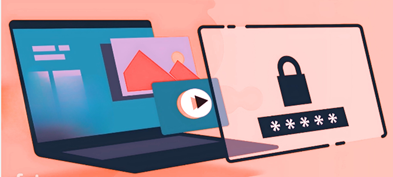There are billions of data-collecting and data-sharing devices that make up the IoT. If this data is not effectively protected, both end-users and manufacturers run the risk of several terrible outcomes.
For instance, a smart thermostat may determine when someone is home based on the heating and cooling settings it collects. Thieves may use this information to time their home invasions if it is not adequately protected. Similarly, unprotected sensor data from a manufacturing assembly line could be accessed and exploited by a rival to steal inventory data. Multiple gadgets can combine even seemingly unimportant data to create detailed portraits of a person’s lifestyle or purchasing habits.
For businesses that initially neglected to appropriately safeguard the gadgets, breaches can have just as tragic consequences. High-profile security breaches have the potential of lasting negative effects on a company’s reputation, revenue, stock price, and other important financial metrics.

Identification and Authentication of IoT Data
There is a connection between identification and authentication because both are cryptographic operations that offer a verifiable identity. They are essential to ensure that data is being sent to the appropriate device and that the source can be believed. Without identification a hacker may speak with your front door and alarm system directly, unlock the door and deactivate the alarm, and enter your house.
In the real world, we have dependable organizations that create identification documents (like a driver’s license). There are cryptographic techniques for carrying out a comparable action with a digital certificate in the digital sphere. A typical IoT device would operate as follows:
The device has a digital certificate that connects its identification to a key using a digital signature like Walnut DSATM and is issued by a dependable third party (a Certification Authority, or CA).
The device subsequently delivers this certificate to a verifier, who then uses it to determine the device’s claimed identity. A “digital handwriting analysis” that anyone can conduct reveals that only the CA could have created the certificate, according to the math’s.
The device is authenticated by the verifier using proof-of-possession of the bound key and a technique like IronwoodTM KAP. Because only that gadget can know the correct response to the inquiry, this mathematical proof requires the device to produce data that only it can produce.
Although they are important, identity and authentication do not sufficiently safeguard IoT data. You must make sure that the appropriate gadgets are communicating with one another and that anyone listening cannot overhear any crucial information or influence the conversation.
IoT Data Security Risks
- Encrypting user data is one of the most fundamental and important safeguards against hackers. Data is converted into a secret code that can only be decoded by authorized people through the process of encryption. Without encryption, data cannot be protected when it is in transit over a network or stored at rest on a device or server. In the absence of encryption, hackers are capable of reading, altering, or stealing user data, as well as impersonating trustworthy devices or users.
- Unsecured communications are one of the main hazards posed by the Internet of Things. Data communications between devices are vulnerable to third-party interception. Threat actors might be able to obtain sensitive data like user passwords or credit card numbers because of this. In this case use encryption to safeguard data in transit whenever it is practical as a security measure.
- Implementing access control is one step in protecting user data from hackers. There is no way to guarantee the integrity of the data without access controls. Intentional actors may alter or corrupt data, which could result in wrong judgements, false information, or even safety issues in important applications. Sensitive information may be accessed, taken, or released because of unauthorized access, which can cause data breaches. This may lead to monetary losses, legal obligations, and reputational harm.
- After the device becomes accessible, it is up to the maker to offer updates to address fresh security threats. Many IoT/IoT vendors, however, fail to provide timely upgrades. After a certain point, many manufacturers stop issuing updates altogether. IoT devices are now exposed to attacks resulting from known security weaknesses.
- The lack of effective safeguards for ensuring users are who they say they are indicates insufficient authentication hygiene. This might make it possible for insider threat actors and external attackers to get access to IoT endpoints and systems that shouldn’t be accessible.
- Minimizing data collection is one step you may take to secure user data from hackers. The idea behind data minimization is to only collect information that is relevant and necessary for a given task and to delete it after that task is complete. The volume and sensitivity of user data that IoT devices or networks keep or process, as well as its exposure and retention, can all be decreased through data reduction.

Protecting Data Through Encryption – In Motion and at Rest
Encryption serves as the IoT’s next level of data security. The most important thing is to encrypt sensitive data when it is in motion between devices. Consider an adversary who overhears a commander ordering his troops to strike. Data can be made confidential and unintelligible to listeners by applying encryption with a cypher like AES.
However, securing your IoT data involves more than just securing data in motion. Additionally, you must safeguard the “data at rest” that is stored on your IoT devices. This comprises details about the device’s identity, configuration, condition during operation, and programming, in addition to audit and log files. You can prevent unauthorised access to your IoT data by using tools that provide integrity and confidentiality for these files. Integrity guarantees that the data was not altered by an unauthorised intrusive party, and confidentiality (achieved by encryption) guarantees that the data is inaccessible to anybody without the right keys.
Finally, ownership of a gadget may change over time. Numerous studies have demonstrated the enormous amount of data leakage that may happen when gadgets like cellphones change owners. A straightforward “key wipe” will, however, prohibit a new device owner from accessing the data of the prior owner if the data on the IoT device has been encrypted. All data encrypted by a key is permanently lost if the keys are destroyed.
Conclusion
The security of IoT devices is vital for every organization. It is crucial for businesses to have strong security measures for their IoT devices in place to safeguard assets, data, and infrastructure from possible attacks. Organizations may lessen the likelihood of successful attacks and the effect of an event by putting these safeguards in place. To help businesses manage security goods on a worldwide basis, eInfochips have been crucial. We are experts in protecting networks of connected devices at all layers, including device connectivity and applications. We can offer full cybersecurity knowledge because of our strategic, transformative, and managed operations methods.













